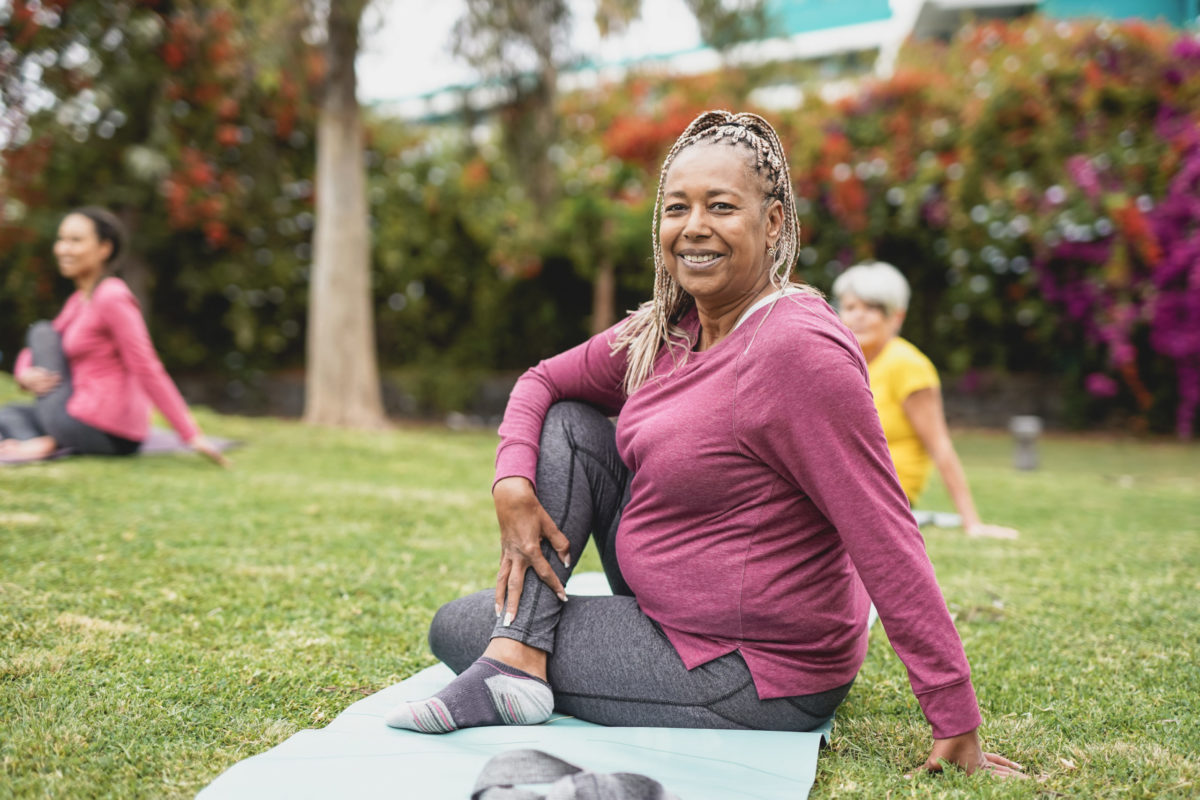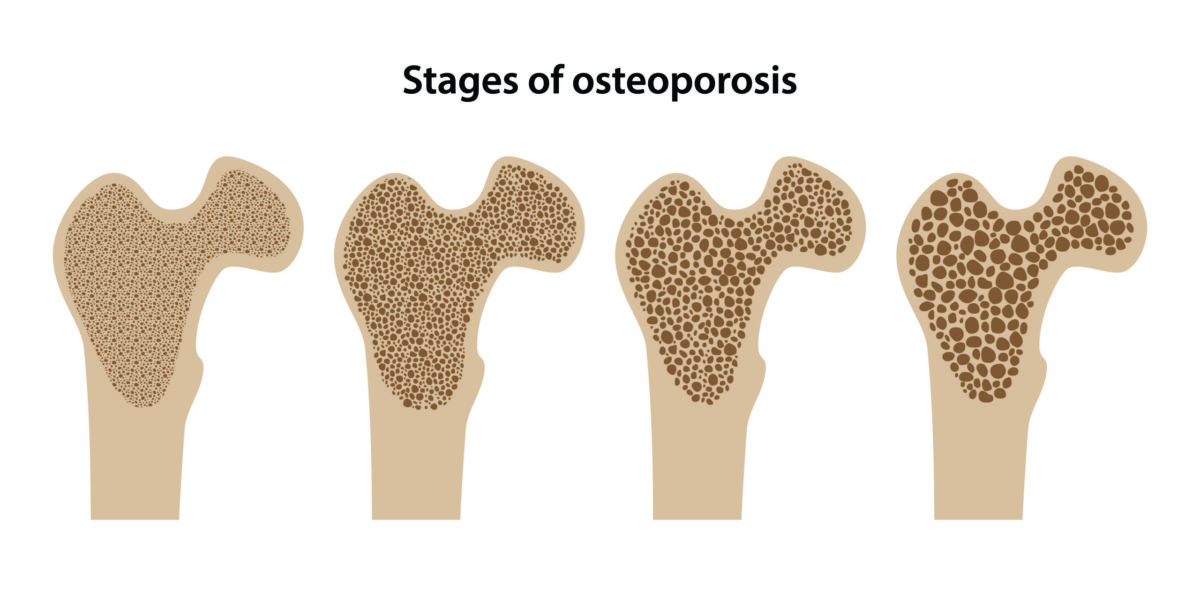
According to the U.S. Office of Disease Prevention and Health Promotion, more than 10 million Americans over age 50 have osteoporosis. Additionally, 43 million men and women are at risk for the disease due to low bone mass.
But what is osteoporosis? It is a degenerative condition in which the bones lose mineral density, causing them to weaken, and become brittle and vulnerable to fractures. Because bone fractures (and particularly hip fractures) are a significant health risk to older people, EmergeOrtho—Triangle Region is committed to helping patients learn about the disease. The following guide explains what it means to have osteoporosis. Read on to learn the symptoms, diagnosis, and treatments for osteoporosis, and what you can do to help prevent it.
What Is Osteoporosis?
The word osteoporosis means “porous bone,” an apt description of the disease. Bone is a living tissue composed of protein and calcium. Healthy bone is constantly being absorbed and replenished by the body. In most people, this process begins to slow down in their early 20s, and they reach peak bone mass in their 30s.

When bone starts being absorbed faster than it is replaced, it can lose mass. Healthy bones are naturally porous (full of holes). Without enough mineral replenishment, those holes become larger, and the bones get weaker. If your body continues to absorb minerals without replacing them, osteoporosis develops.
The Causes of Osteoporosis
Researchers have not been unable to pinpoint the exact medical causes of osteoporosis, but they have identified certain risk factors commonly associated with the disease. These include:
- Age
Bone density naturally declines after age 35, and continues to decrease with age. - Genetics
Your ethnicity, frame, and physical attributes can increase your risk of developing osteoporosis. White and Asian women have the highest risk of the disease. - Nutrition and Lifestyle
Drinking excessive alcohol, smoking, low-calcium diets, poor nutrition, low body weight, and a sedentary lifestyle have all been linked to osteoporosis. - Other Illnesses and Certain Medications
Steroidal medications and thyroid conditions have been linked to osteoporosis.
Even though everyone loses bone density as they get older, women are two times more likely than men to sustain a bone fracture due to osteoporosis. This is because women experience an accelerated loss in bone calcium after menopause. Menstrual cycles cease when a woman’s body produces less estrogen, which is vital to maintaining bone mass and strength. On average, women lose between 30% and 50% in bone density, while men only lose 20%-30%.
Are There Osteoporosis Symptoms?
Often, people do not know what osteoporosis is because it is not diagnosed until they fracture a bone. In most cases, there are no symptoms for many years.
However, as the disease progresses, symptoms can begin to show up. These might include:
- Bones that fracture more easily than expected
- Back pain caused by fractured or collapsed spinal vertebrae
- Loss of height
- Stooped posture
- Dowager’s hump, which causes a severely rounded upper back
Regardless of whether you have symptoms, talk to your doctor about osteoporosis and monitoring bone density if you have any of the following risk factors:
- You have a family history of the disease
- Either of your parents had a broken hip
- You went through menopause early
- You took corticosteroid medication for months at a time
How To Reduce Your Risk for Osteoporosis
Although everyone experiences some bone loss with age, some simple diet and lifestyle habits can help with osteoporosis prevention:
- Getting Plenty of Calcium
Men and women from ages 18 to 50 should have 1,000 mg of calcium per day; women over 50 and men over 70 need 1,200 mg per day.
Although getting calcium from food is best, your doctor may recommend supplements to ensure you get enough of the vital mineral. Incorporate as many calcium-rich foods into your diet as possible, including dairy, leafy greens, fortified grains, and soy, to help keep your bones healthy.
- Getting Enough Vitamin D
Vitamin D helps your body absorb calcium, so getting adequate amounts (at least 600 IU per day) is critical to bone health. Vitamin D is found in food, including certain types of fish and dairy products. Sunlight exposure can also help your body naturally produce it.
As with calcium, your doctor may recommend supplementing vitamin D. However, because it can be toxic in high doses, make sure to get instructions on the correct amount to take each day.
- Exercising Regularly
Just like muscles, bones need exercise to stay strong. Regular exercise improves your balance, strength, and overall health, which helps prevent falls, fractures, and bone loss. EmergeOrtho doctors are experts in fall and fracture prevention strategies, and can assist patients in learning these practices.
Osteoporosis Diagnosis and Treatments
Orthopedic doctors use several tests to diagnose osteoporosis and assess patient risk for the disease. At EmergeOrtho, our doctors rely on:
- Bone Density Scan (or DXA)
This is a painless, non-invasive X-ray measure of bone mass. The scan detects problems before they occur, and can help calculate the odds of a future fracture. It creates a T-Score—a measure of your current bone density compared to the optimal bone density of someone of your ethnicity and gender at 20-25 years of age. This score provides an accurate measure of osteoporosis risk and progression. - Body Composition Assessment
This test produces color images of fat, lean mass, bone, and fat mass index to help doctors evaluate your risk for osteoporosis.
Although there is no cure for osteoporosis, your doctor will evaluate your risk for a fall or bone fracture to make recommendations. Patients at high risk of fractures may be prescribed medication, including hormone-related therapy, to help restore bone density. Patients at lower risk may not take medication for osteoporosis treatment, but instead focus on making lifestyle changes to reduce risk.
Managing Osteoporosis with EmergeOrtho—Triangle Region
At EmergeOrtho, our specialists are dedicated to providing sophisticated, patient-centered care, focused on helping them Emerge Stronger. Healthier. Better.
Recognized as a Gold Star Practice by the International Osteoporosis Foundation, EmergeOrtho—Triangle Region uses the latest medical technology coupled with unparalleled care to provide patients with an optimal orthopedic experience.
To learn more, request an appointment now. Or, call us any time at (919) 220-5255.







